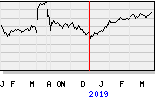
Halfway through its 5-year sustainability program ‘Healthy people, Sustainable planet’, Philips is on track to meet all its targets, with 12% of revenues from Circular Products and Solutions and 64% from Green Revenues in 2018.
Amsterdam, the Netherlands – Royal Philips (NYSE: PHG, AEX: PHIA), a global leader in health technology, today reported further progress in its sustainability performance in 2018 with a significant reduction of its carbon footprint by 10% compared to 2017, driven by a 53% decrease in total CO2 emissions from Philips’ own manufacturing operations. The Philips 2018 sustainability update is an integral part of the Philips Annual Report 2018.
At the UN Climate Change Conference COP21 in 2015, Philips pledged to play its part in fighting climate change, “the greatest threat to global health in the 21st century” according to Dr. Margaret Chan, Former Director of the World Health Organization. The company committed to becoming fully carbon neutral in its own operations, and to sourcing all its electricity usage from 100% renewable sources by 2020. Delivering on that commitment, in 2018 the company increased its global renewable electricity share to 90% from 79% in 2017. All Philips’ US operations were powered by renewable electricity from the Los Mirasoles windfarm in 2018. In addition, the Krammer and Bouwdokken windfarms in the Dutch province of Zeeland, with whom the company closed long-term contracts through its renewable electricity purchasing consortium with AkzoNobel, DSM and Google, have started powering all Philips’ operations in the Netherlands. Combined with the Los Mirasoles windfarm this covers more than half of the company’s total electricity demand.
“With our 5-year sustainability program ‘Healthy people, Sustainable planet’ we continue to deliver on our commitment to create value for our customers though sustainable solutions, leading by example in our sustainable operations, and driving sustainability through our supply chain,” said Frans van Houten, CEO of Royal Philips. “I am proud that our drive for innovation is having an impact on making the world healthier and more sustainable, and I am convinced that it will increasingly do so in the future”.
Aligned with the United Nations Development Goals, Philips’ Healthy people, Sustainable planet program involves three focal areas: access to care for the underserved (SDG3), sustainable use of materials (circular economy and eco-design) (SDG12) and sustainable use of energy (energy and emission reduction and renewable energy) (SDG13).
Philips’ 2018 highlights for these streams include:
•Two new Philips’ Community Life Centers (CLCs) were opened in South Africa. CLCs provide quality care at primary care level, addressing all healthcare needs, including mother and child care and non-communicable disease (NCD) care.
•In 2018, Philips improved the lives of 2.24 billion people, including the contribution of brand license partners. Philips’ products and solutions that support people’s health and well-being, and its Green Products and Services that contribute to a healthy ecosystem, improved 1.54 billion lives in 2018.
•Green Revenues [1] increased to EUR 11.5 billion in 2018, or 64% of sales, compared to 60% in 2017. In addition, revenues from Circular Products and Services increased to 12% from 10% a year earlier. Philips is committed to grow its Green Revenues to 70% of sales, and to have 15% of its revenues generated through circular economy-driven propositions [2] by 2020.
•As a founding member of the Capital Equipment Coalition, Philips is on track to fulfill its pledge that by 2020 it will take back and repurpose all the large medical systems equipment that its customers are prepared to return to it.
•In its operations, Philips effectively reduces, recycles and re-uses waste as much as possible, and aims to send zero waste to landfill by 2020. In 2018, Philips reported 1.7 kilotons of waste sent to landfill. 19 out of our 36 industrial sites achieved Zero Waste to Landfill status.
•Philips became the first health technology company in the world to have its CO2 emission targets accepted by the Science Based Targets initiative, a collaboration between the UN Global Compact, the World Resources Institute and the World Wide Fund for Nature aimed at driving ambitious corporate climate action.
•Philips invested approximately EUR 1.4 billion in Sustainable Innovation [3] in 2018.
•Philips scored 81 out of 100 points overall in the Health Care Equipment & Services industry group of the 2018 Dow Jones Sustainability Index (DJSI). With this score, Philips was ranked second highest in the first year that it has been reclassified to this category.
[1] Green Revenues are revenues generated through products and services that offer a significant environmental improvement in one or more Green Focal Areas: Energy efficiency, Packaging, Hazardous substances, Weight, Circularity and Lifetime reliability. For healthcare equipment, remote serviceability is another Green Focal Area. The lifecycle approach is used to determine a product’s overall environmental improvement. It calculates the environmental impact of a product over its total life cycle (raw materials, manufacturing, product use and disposal).
[2] Circular Revenues are defined by revenues generated through products and solutions that meet specific Circular Economy requirements. These include performance and access-based business models, refurbished, reconditioned and remanufactured products and systems, refurbished, reconditioned and remanufactured components, upgrades or refurbishment on site or remote, and products containing at least 30% recycled plastics.
[3] Sustainable Innovation is the Research & Development spend related to the development of new generations of products and services that address the United Nations’ Sustainable Development Goals 3 (“to ensure healthy lives and promote well-being for all at all ages”) or 12 (“to ensure sustainable consumption and production patterns”).
